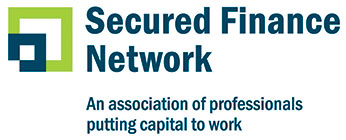- Lawrence Ridgway Joins Pathward’s Commercial Finance Team
- ABL Market Update – Q3 2025: Resilience in the Face of Macro Bifurcation
- SFNet Releases Q3 2025 Asset-Based Lending and Confidence Indexes
- The All-You-Can-Eat Borrowing Base
- SFNet’s 81st Annual Conference: Innovations and Trends Shaping the Future
U.S. Bank’s Stampfel and Rubin Continue to Build Momentum, Deliver Innovative Asset-based Financing
April 14, 2022
By Eileen Wubbe

Pictured, left to right: Daniel Stampfel, Mitch Rubin and David Slavik
U.S. Bank announced it hired Daniel Stampfel and Mitch Rubin as senior vice presidents of its asset-based finance division. The hires are part of a strategy for the broader U.S. Bank commercial banking team to continue its expansion in Texas and across the country to better serve middle-market clients.
Based in Dallas, Stampfel will lead efforts to provide asset-based credit solutions for businesses across Texas. Stampfel was most recently with JPMorgan Chase, where he served as an executive director and led a national asset-based lending credit team. He also was a senior vice president at PNC, where he was responsible for underwriting commercial ABL transactions. Stampfel has more than 20 years of ABL experience. He is also a board member for the Fine Arts Chamber Players in Dallas.
Based in New York City, Rubin will lead the bank’s efforts to provide asset-based credit solutions for businesses across the Northeast. Rubin was most recently with PNC Business Credit, where he served as a vice president and was responsible for ABL originations and portfolio management and focused on private equity and middle-market clients. Prior to PNC, Rubin worked as an ABL relationship manager for Wells Fargo Capital Finance.
What is behind U.S. Bank’s expansion in Texas and in New York?
David Slavik, SVP, national sales director – middle market, U.S. Bank Asset Based Finance: Lender demand for funded loan volume and stable asset performance, coupled with borrower demand for flexible and stable credit facilities, has fueled demand for ABL loans. Winning new ABL relationships has never been more difficult. This market dynamic necessitates a robust, multifaceted delivery model. Professionals like Mitch and Daniel are critical to this effort and they will add tremendous value in supporting our clients, banking partners and prospecting efforts.
Daniel and Mitch will be supporting our Commercial Banking expansion market teams in Texas and New York. Both markets enjoy a high volume of ABL loan activity and, as a result, significant competition. Their addition to these markets ensures local support for prospects, clients and product partners alike. This is a critical component to the delivery model and, ultimately, loan growth.
Competition for experienced and competent ABL professionals rival that of loan volume. Mitch and Daniel are just that. Their experience, engagement and enthusiasm will greatly improve our competitiveness and efficacy. I am looking forward to supporting each of them as we grow their respective markets.
Daniel, you began your career in Texas, then spent some time in New York, and are now back in Texas. How have your prior roles helped prepare you for your current role at U.S. Bank?
Stampfel: I spent 20 years in New York working on ABL deals of all sizes from small middle market to large corporate. It’s where I cut my teeth in the ABL industry. During that time, I was really able to develop my credit skills through underwriting and managing credits, as well as managing bankruptcies and distressed situations. That knowledge base helps me in my current role at U.S. Bank tremendously. It helps me develop new business, structure creative solutions and identify potential risks.
What are some of your goals for your new role at U.S. Bank in the coming year?
Rubin: Extensive networking and leveraging existing industry relationships to build up a pipeline. U.S. Bank is focused on supporting more Northeast companies through asset-based lending and I’m ready to deliver for our future customers. Most importantly, I’m looking forward to getting to know my new colleagues and teammates. As most readers know, originating and closing a transaction takes a small village, and having excellent internal relationships is paramount to being successful.
Stampfel: To build my network and build great relationships with prospects, customers, and partners. Continued expansion in Texas is a strategic priority for the U.S. Bank Commercial Banking team and I’m excited to be a part of that growth.
What made the opportunity to join U.S. Bank appealing to you?
Rubin: During the interview process, the positive culture of U.S. Bank and genuine excitement from senior management was very appealing. The opportunity to lead a major expansion market motivates me. I knew right away it was the right challenge at this point of my career, and that is a testament to invaluable mentorship and experience from my prior roles.
Stampfel: The role itself and the culture of U.S. Bank. It’s also a wonderful opportunity to cover the ABL market for the whole State of Texas for an institution the size of U.S. Bank.
Mitch, as a young professional in the industry, what would you say to recent college grads who studied finance? Why should they consider a career in ABL?
ABL was a relatively unknown field to me coming out of school. By rotating through different departments, I was able to see first-hand how businesses operate day-to-day and how finance plays a critical role in senior management and PE firm decisions. ABL also allows for broad insights into dozens of sectors, as most portfolios take an industry-agnostic approach. Being able to see how experienced senior managers react and respond to real world events is a great learning experience as well. As a bonus, the ABL community is very helpful and welcoming.
What are you seeing in the industry right now? Any challenges or surprises?
Rubin: I continue to be surprised by the overall resiliency of the industry and performance of ABL portfolios. As for challenges, significant capital is looking to be deployed in the market, leading to fierce competition. Winning the mandate will require more than a competitive term sheets, and premiums will be placed on certainty to close and the breadth of products you can bring to the table.
Stampfel: Not surprisingly, there’s a lot of competition. Banks are having to be more aggressive with terms to win a deal, especially with the amount of capital looking to be deployed. What has surprised me is the overall strength of ABL borrowers and how quickly portfolios improved in the last two years.
What do you predict for the ABL industry in 2022?
Rubin: Given ongoing geopolitical events, supply chain issues and pandemic-related challenges, it’s tough to predict what’s to come, but I think you’ll see significant M&A activity and opportunistic refinancings to continue as borrowers/sponsors look to take advantage of increased risk appetite and cheaper economics.
Stampfel: I think you’ll also see some institutions taking on more risk due to competition and given how well ABL portfolios fared since the start of the pandemic. 2020 provided a good snapshot of how a company could adapt and survive a downturn which is something we hadn’t seen for many years. There were a lot of M&As last year and I think that will continue this year, but with slightly tougher credit profiles.


.jpg?sfvrsn=f1093d2a_0)
